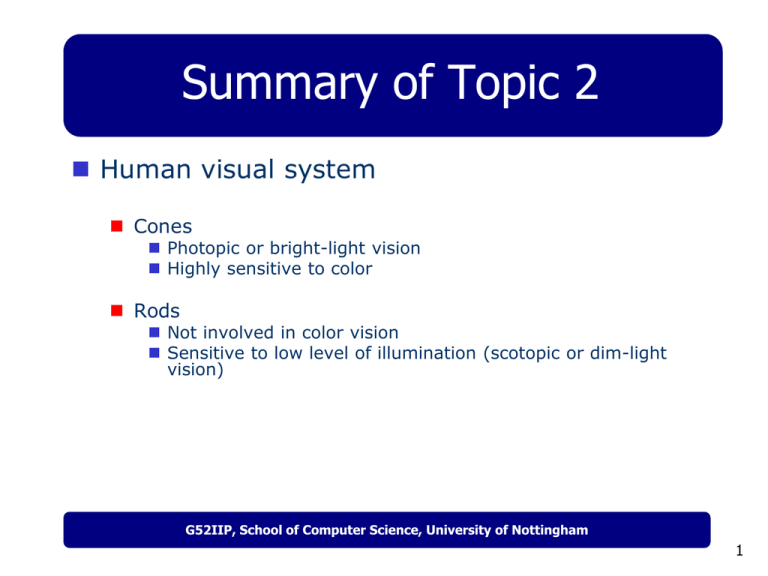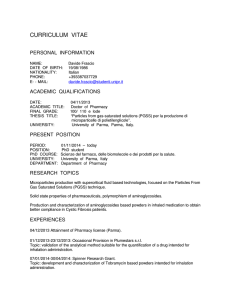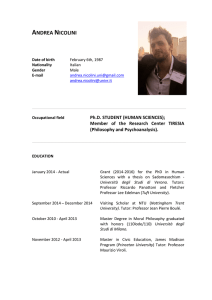SummarySlides - School of Computer Science
advertisement

Summary of Topic 2 Human visual system Cones Photopic or bright-light vision Highly sensitive to color Rods Not involved in color vision Sensitive to low level of illumination (scotopic or dim-light vision) G52IIP, School of Computer Science, University of Nottingham 1 Summary of Topic 2 Human visual system Brightness adaptation Subjective brightness is a logarithmic function of the light intensity incident on the eye The HVS cannot operate on the full perceptible brightness range (~10 orders of magnitude) simultaneously The total brightness range the HVS can discriminate simultaneously is rather small in comparison (about 4 orders of magnitude) It accomplishes this through (brightness) adaptation G52IIP, School of Computer Science, University of Nottingham 2 Summary of Topic 2 Human visual system Brightness discrimination Perceivable changes at a given adaptation level Weber ratio, DI/I, where I is background, DI intensity change Small Weber ratio - good discrimination Larger Weber ratio - poor discrimination Perceived brightness is not a simple function of intensity Mach band pattern Simultaneous contrast G52IIP, School of Computer Science, University of Nottingham 3 Summary of Topic 2 A simple image model Sampling Quantization G52IIP, School of Computer Science, University of Nottingham 4 Summary of Topic 2 Colour image The RGB Color Model R, G, B at 3 axis ranging in [0 1] each Gray scale along the diagonal If each component is quantized into 256 levels [0:255], the total number of different colors that can be produced is (28)3 = 224 =16,777,216 colors. The YIQ Color Model Video (NTSC) standard Y encodes luminance; I and Q encode chrominance (“color”) Black and white TV shows only the Y channel Backward compatibility; efficiency YCbCr G52IIP, School of Computer Science, University of Nottingham 5 Summary of Topic 2 Colour image representation G52IIP, School of Computer Science, University of Nottingham 6






